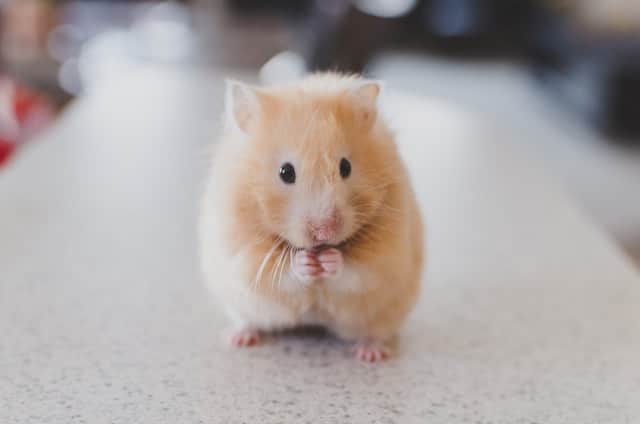Parrots are cherished pets globally due to their bright colors and their ability to mimic human speech. However, teaching a parrot to talk isn’t always an easy task. It requires time, consistency, and understanding the bird’s behavior. This informative guide aims to simplify the process of training your pet parrot to talk by taking you through the crucial steps.
Understanding Parrot Speech Capabilities
Before you begin teaching your feathered friend new words, it’s essential to understand their speech capabilities. Not all parrot species have the ability to mimic human speech. The extent to which a parrot can learn words and phrases vastly depends on their species.
A découvrir également : How to set up a home for a new reptile pet
Parrots, unlike humans, do not have vocal cords. They produce sounds by pushing air out of their trachea and directing the airflow in different ways. This allows some parrots to mimic a variety of sounds, including human speech. African Grey Parrots and Amazon Parrots are renowned for their speech capabilities and can learn a vast vocabulary.
Understanding these capabilities will help set realistic expectations and prevent frustration during the training process. It’s also important to note that more than their ability, a parrot’s willingness to speak also plays a huge role in their speech training.
En parallèle : Identifying and addressing anxiety in cats
Creating the Right Environment for Learning
Once you are familiar with your parrot’s speech capabilities, the next step is to create a conducive environment for learning. Parrots are sensitive birds that pick up on their owners’ emotions. Therefore, it’s important to approach the training with a calm and patient demeanor.
A quiet, calm environment is best for parrot speech training. Minimize distractions such as loud noises and other pets that may interrupt the training session. Consistency is also key to successful training. Establish a regular training schedule that suits both your timings and the bird’s natural routine.
Getting to know your parrot and understanding their behavior can also aid in training. Parrots are more likely to mimic sounds when they are happy and comfortable. Therefore, ensure your parrot’s comfort by providing a clean, spacious cage and a balanced diet.
Training Techniques for Teaching Words and Phrases
The training process involves teaching your parrot to associate sounds with objects or actions. Start with simple, clear words that your parrot can easily repeat. A good first word might be the bird’s name or a simple greeting like “hello”.
When teaching a new word, say it clearly and consistently to the parrot. Repeat the word every time you interact with them. Parrots learn best through repetition and reinforcement. Do not rush the process by introducing too many words at once. Once your parrot has mastered one word, you can proceed to the next.
Training sessions should be short but frequent, ideally around 10-15 minutes each. Long training sessions may overwhelm your parrot and could lead to less effective learning.
Reinforcing Positive Behavior with Treats
Just like any other pet, parrots respond well to positive reinforcement. This involves rewarding your parrot whenever they successfully mimic a sound or word. Treats are a popular form of reward and can significantly help in the learning process.
Choose a treat that your parrot particularly enjoys, like a piece of fruit or a favorite seed. Whenever your parrot successfully mimics the word or sound, immediately give them the treat. This will help them associate the reward with the correct behavior, encouraging them to repeat it.
Remember to give treats sparingly. Too many treats can lead to health issues and disrupt a balanced diet. Instead, use the treat as a motivational tool during training sessions but don’t rely on it entirely.
Managing Expectations and Patience
The last but probably the most significant aspect of parrot speech training is patience. Teaching a bird to talk is a gradual process that will take time. Do not expect immediate results and remember to celebrate small victories along the way.
Each parrot is unique and will learn at their own pace. Some parrots may pick up words and phrases quickly, while others may take a little more time. The key is to remain consistent and patient throughout the training process.
Managing your expectations is also crucial. Not all parrots will develop extensive vocabularies. Some may only learn a few words, while others may prefer to stick with their natural bird calls. Remember that the goal of training is not just about teaching your parrot to talk but also about forming a bond with your pet.
In summary, teaching a parrot to talk can be a rewarding process for both you and your bird. Understanding your parrot’s capabilities, creating a conducive learning environment, employing effective training techniques, using treats for positive reinforcement, and remaining patient are all essential components of successful speech training. It’s an engaging activity that strengthens the bond between you and your parrot while also providing mental stimulation for your feathered friend.
Social Media and Parrot Training
Aside from traditional training methods, social media has become a valuable tool for pet bird owners. Online platforms offer a wealth of resources that can help teach your parrot to talk. From training videos to online communities of parrot owners, there are many ways social media can enhance the training process.
Platforms like YouTube offer numerous videos detailing different techniques for parrot speech training. These visuals can be extremely helpful, particularly for first-time bird owners. By watching these videos, you can learn various strategies to teach your parrot to talk, help your bird learn through repetition, and understand how to reward your pet for mimicking sounds correctly.
Joining online communities or forums dedicated to pet birds also provides a platform to share experiences, ask for advice, and learn from other bird owners. Websites like Reddit and bird-specific forums often have threads dedicated to parrot training. Here, you can share your progress, ask questions, and get tips to help teach your parrot to talk.
Social media’s role in parrot training is not just limited to providing resources. Platforms like Instagram and TikTok allow bird owners to showcase their parrots’ abilities. This exposure can be hugely motivational for both the bird and the owner. It’s an interactive way to engage with the training process, and seeing other birds learn can encourage your pet to mimic speech.
However, remember that every bird is different, and what works for one might not work for another. Always take into account your parrot’s personality, comfort level, and preference while trying out new training methods.
Involving Professionals in Parrot Speech Training
While it’s possible to train your pet bird at home, involving professional help can be beneficial, especially for first-time bird owners. Experts, like those from Texas A&M’s Veterinary Medical Teaching Hospital, offer services to help teach your bird to talk.
Professionals can assess your parrot’s learning capabilities and suggest personalized training methods. They can also identify any potential learning barriers that you might miss as a hobbyist. For instance, they can help diagnose health issues that could hinder the bird’s ability to learn or talk.
Professional trainers also have experience in dealing with different bird personalities. They have the skills to adjust their training techniques to suit each individual bird, which can make the process smoother and more effective.
However, professional training should not replace the bond and interaction between you and your bird. It should complement your training efforts at home. Remember, the goal is not just to make your parrot talk but also to strengthen your bond with them.
Conclusion
Parrot talk is truly delightful and amusing, but teaching them requires dedication, patience, and a proper understanding of their capabilities. Training your parrot to talk not only enhances their mental stimulation but also strengthens the bond between you and your pet bird.
Utilize resources such as social media and professional training to supplement your efforts at home. These platforms can provide valuable insights and methods to make the process easier and more enjoyable.
Remember, every parrot will learn at their own pace, and some might prefer their natural bird calls over human speech. Keep your expectations realistic, and cherish each word or sound your parrot learns to mimic. After all, the joy of parrot training lies in the journey, not just the result.
















